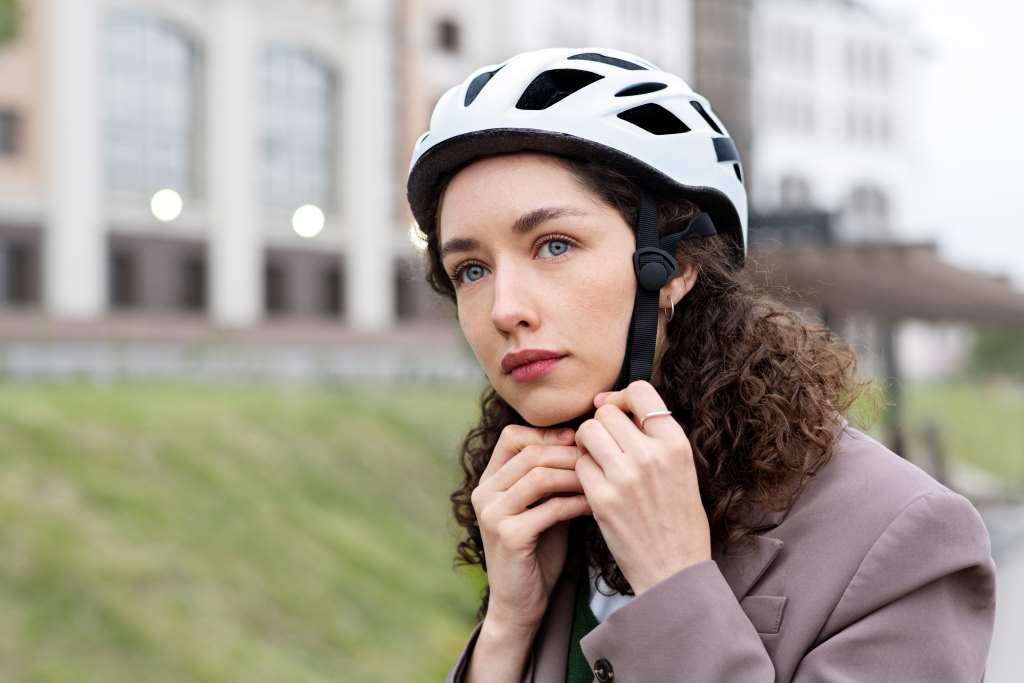Ensuring your bike helmet fits properly is not just about comfort—it’s a critical safety measure that can save your life. Studies reveal that wearing a helmet reduces the risk of severe head injuries by up to 85%, but a poorly fitted helmet diminishes its effectiveness. In this guide, we’ll explore everything you need to know about how bike helmet should fit, blending expert opinions, actionable tips, and insights on safety standards. Let’s delve into why a perfect helmet fit is essential, and for an in-depth look, explore Talkcitee.
Why Helmet Fit Matters for Every Rider
Your bike helmet is more than an accessory; it’s a safety device designed to protect you from impacts during a crash or fall. Yet, the effectiveness of a helmet hinges on its fit. A well-fitted helmet stays securely in place, absorbs impact forces evenly, and reduces the likelihood of brain injuries.
The Science Behind Helmet Safety
A helmet works by dispersing the force of an impact over a larger area, reducing pressure on the skull. If the helmet is too loose or improperly positioned, it can shift upon impact, leaving parts of the head unprotected. According to the National Safety Council, 97% of cyclists who died in accidents were not wearing helmets correctly or at all.
Key Features of a Properly Fitted Bike Helmet
Achieving the perfect fit involves adjusting several components of your helmet. Here’s a breakdown of what to look for:
- Snug Fit Around the Head
The helmet should feel snug but not uncomfortable. It should stay in place even without the chin strap fastened. A loose helmet can wobble, reducing protection during an impact.
- Level Positioning
Always ensure the helmet sits level on your head. It should cover most of your forehead while leaving about two fingers’ width above your eyebrows. A tilted helmet exposes the forehead or back of the skull, increasing injury risk.
- Secure Straps
Chin straps should form a “V” shape just below your ears and fasten snugly under your chin. You should be able to fit one or two fingers between your chin and the strap for comfort without compromising security.
- Adjusted Side and Back Fit Systems
Modern helmets often include a dial-adjustment or cradle system at the back. Use these to tighten the fit and prevent the helmet from slipping.
Step-by-Step Guide to Fitting Your Helmet
Step 1: Choose the Right Size
Start by measuring your head’s circumference using a flexible tape measure. Match your measurements to the helmet size chart provided by the manufacturer.
- Small: 20–21.75 inches (51–55 cm)
- Medium: 21.75–23.25 inches (55–59 cm)
- Large: 23.25–24.75 inches (59–63 cm)
Step 2: Adjust the Interior Pads
Most helmets come with removable foam pads. These pads allow you to customize the fit, especially for children whose head sizes may change over time.
Step 3: Align the Helmet Correctly
Place the helmet on your head and adjust it until the front edge aligns just above your eyebrows. The helmet should sit flat and feel balanced, not tilted.
Step 4: Fasten the Straps
Ensure the chin straps are evenly adjusted and buckle them securely. Test the fit by opening your mouth wide—if the helmet presses down on your head, it’s snug enough.
Common Mistakes to Avoid When Fitting a Helmet
- Wearing the Helmet Backwards
It may seem obvious, but some cyclists unknowingly wear their helmets the wrong way. Look for the label or logo at the front for guidance.
- Ignoring Strap Adjustments
Loose straps are a common issue, and they can render the helmet useless in an accident. Always double-check the strap configuration before riding.
- Using the Wrong Size
Many riders use “hand-me-down” helmets or skip measuring their heads, leading to ill-fitting helmets that slide around. It’s also important to tune your bike regularly to ensure a safe and comfortable ride.
How to Check If Your Helmet Fits Properly
- Shake your head gently. A well-fitted helmet shouldn’t move around.
- Perform the “roll-off test” by trying to push the helmet forward or backward—it should resist movement.
- Ensure the straps form a tight yet comfortable “V” below your ears.
Different Helmets for Different Activities
Your cycling style can also dictate how your bike helmet should fit. For BMX riders, road cyclists, or mountain bikers, helmets are tailored for unique needs.
BMX and Lightweight Options
BMX riders prioritize lightweight, aerodynamic helmets for agility. To explore these options, check out Lightweight BMX Bikes. Proper fit is even more critical here due to the higher risk of flips and tricks.
Road and Commuter Helmets
Road helmets often have extended coverage and advanced ventilation. Ensure these helmets provide a secure fit, especially during long rides.
Mountain Biking Helmets
Mountain biking helmets often feature extended rear protection. Adjust the fit systems to ensure the helmet remains stable on uneven terrain.
The Role of Standards and Certification in Helmet Safety
When selecting a helmet, always check for certification labels such as CPSC (Consumer Product Safety Commission) in the US or EN 1078 in Europe. These certifications ensure the helmet meets safety standards and can withstand typical impacts.
How Bike Helmet Should Fit for Kids
Children require extra attention when fitting helmets. Kids’ helmets should include:
- Padding that accommodates growth.
- Easily adjustable straps for quick modifications.
- Bright colors for visibility.
Maintenance Tips to Keep Your Helmet Fit Perfect
Proper maintenance ensures your helmet continues to provide safety:
- Inspect Regularly: Check for cracks, dents, or worn straps.
- Replace When Necessary: Helmets should be replaced after an impact or every 5–10 years.
- Store Properly: Avoid leaving helmets in extreme heat, as it can degrade materials.
Conclusion
Understanding how bike helmet should fit is essential for every cyclist. A properly fitted helmet not only ensures comfort but also provides critical protection during accidents. By following these expert tips, you can confidently ride knowing your helmet is safeguarding your head.





